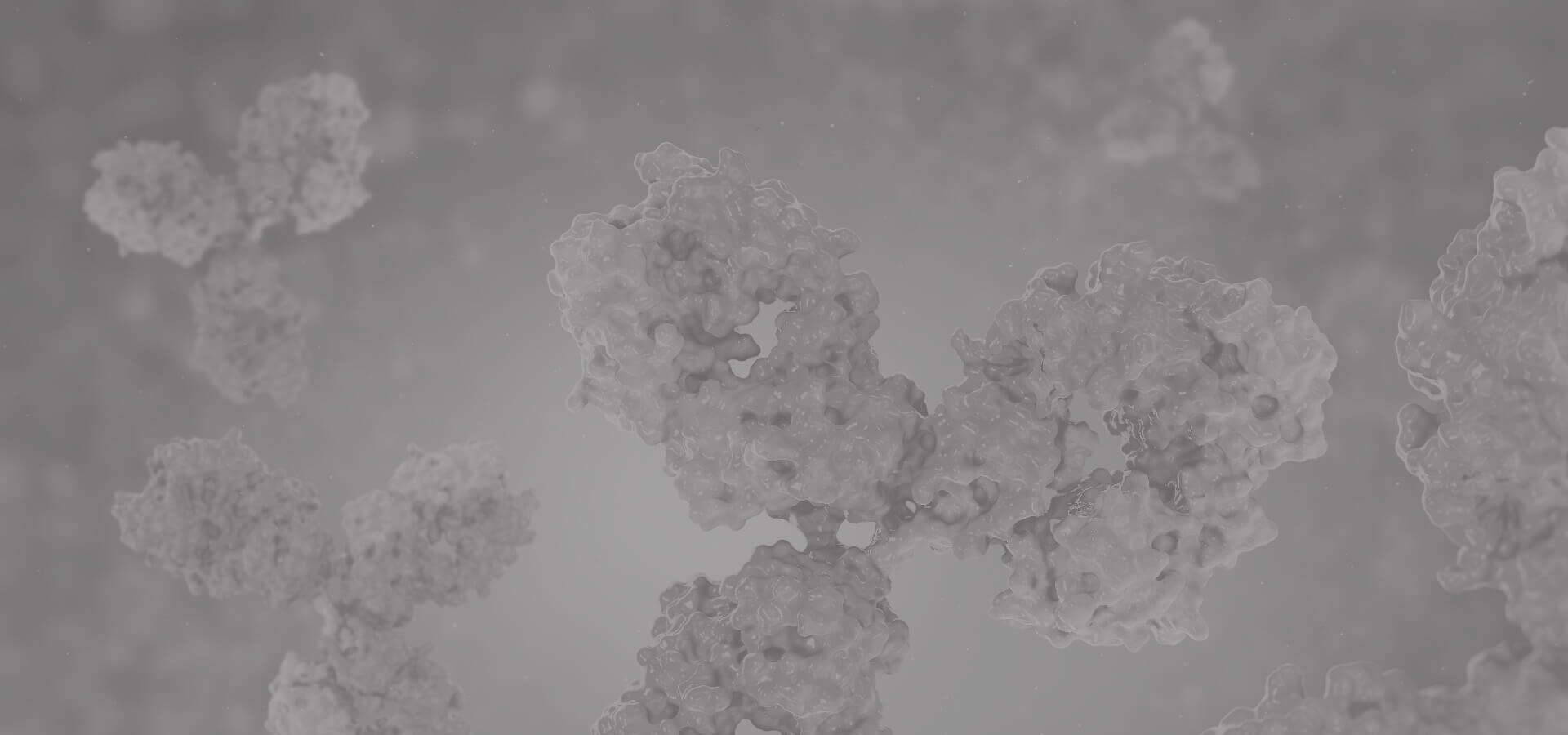Mouse Anti-NKX2-5 Antibody (1E6) (CBMAB-0735-YC)
Basic Information
Formulations & Storage [For reference only, actual COA shall prevail!]
Target
During heart development, acts as a transcriptional activator of NPPA/ANF in cooperation with GATA4 (By similarity).
May cooperate with TBX2 to negatively modulate expression of NPPA/ANF in the atrioventricular canal (By similarity).
Binds to the core DNA motif of NPPA promoter (PubMed:22849347, PubMed:26926761).
Together with PBX1, required for spleen development through a mechanism that involves CDKN2B repression (PubMed:22560297).
Aortic valve morphogenesisManual Assertion Based On ExperimentTAS:BHF-UCL
Apoptotic process involved in heart morphogenesisIEA:Ensembl
Atrial cardiac muscle cell developmentBy SimilarityISS:BHF-UCL
Atrial cardiac muscle tissue developmentISS:BHF-UCL
Atrial septum morphogenesisManual Assertion Based On ExperimentIMP:BHF-UCL
Atrioventricular node cell developmentIEA:Ensembl
Atrioventricular node cell fate commitmentIEA:Ensembl
Atrioventricular node developmentISS:BHF-UCL
Bundle of His developmentISS:BHF-UCL
Cardiac conduction system developmentManual Assertion Based On ExperimentIMP:BHF-UCL
Cardiac muscle cell developmentISS:BHF-UCL
Cardiac muscle cell differentiationBy SimilarityISS:BHF-UCL
Cardiac muscle cell proliferationIEA:Ensembl
Cardiac muscle contractionIEA:Ensembl
Cardiac muscle tissue morphogenesisManual Assertion Based On ExperimentIMP:BHF-UCL
Cardiac ventricle formationIEA:Ensembl
Cell differentiationBy SimilarityISS:BHF-UCL
Embryonic heart tube developmentBy SimilarityISS:BHF-UCL
Embryonic heart tube left/right pattern formationIEA:Ensembl
Heart loopingBy SimilarityISS:BHF-UCL
Heart morphogenesisBy SimilarityISS:BHF-UCL
Heart trabecula formationIEA:Ensembl
HemopoiesisBy SimilarityISS:BHF-UCL
Negative regulation of apoptotic processBy SimilarityISS:BHF-UCL
Negative regulation of canonical Wnt signaling pathwayISS:BHF-UCL
Negative regulation of cardiac muscle cell apoptotic processManual Assertion Based On ExperimentIMP:BHF-UCL
Negative regulation of myotube differentiationManual Assertion Based On ExperimentIMP:BHF-UCL
Negative regulation of transcription by RNA polymerase IIManual Assertion Based On ExperimentIMP:BHF-UCL
Negative regulation of transcription, DNA-templatedBy SimilarityISS:BHF-UCL
Outflow tract septum morphogenesisManual Assertion Based On ExperimentIMP:BHF-UCL
Pharyngeal system developmentBy SimilarityISS:BHF-UCL
Positive regulation of cardioblast differentiationBy SimilarityISS:BHF-UCL
Positive regulation of cell population proliferationBy SimilarityISS:BHF-UCL
Positive regulation of gene expressionIEA:Ensembl
Positive regulation of heart contractionISS:BHF-UCL
Positive regulation of neuron differentiationManual Assertion Based On ExperimentIMP:BHF-UCL
Positive regulation of sodium ion transportBy SimilarityISS:BHF-UCL
Positive regulation of transcription by RNA polymerase IIManual Assertion Based On ExperimentIDA:BHF-UCL
Positive regulation of transcription initiation from RNA polymerase II promoterBy SimilarityISS:BHF-UCL
Positive regulation of transcription via serum response element bindingBy SimilarityISS:BHF-UCL
Positive regulation of transcription, DNA-templatedManual Assertion Based On ExperimentIDA:UniProtKB
Proepicardium developmentIEA:Ensembl
Pulmonary myocardium developmentIEA:Ensembl
Purkinje myocyte differentiationIEA:Ensembl
Regulation of cardiac conductionBy SimilarityISS:BHF-UCL
Regulation of cardiac muscle cell proliferationIEA:Ensembl
Regulation of cardiac muscle contractionBy SimilarityISS:BHF-UCL
Regulation of transcription by RNA polymerase IIManual Assertion Based On ExperimentIBA:GO_Central
Right ventricular cardiac muscle tissue morphogenesisManual Assertion Based On ExperimentIMP:BHF-UCL
Sarcomere organizationIEA:Ensembl
Septum secundum developmentManual Assertion Based On ExperimentIMP:BHF-UCL
Spleen developmentManual Assertion Based On ExperimentIMP:UniProtKB
Thyroid gland developmentManual Assertion Based On ExperimentIMP:BHF-UCL
VasculogenesisBy SimilarityISS:BHF-UCL
Ventricular cardiac muscle cell developmentBy SimilarityISS:BHF-UCL
Ventricular cardiac myofibril assemblyIEA:Ensembl
Ventricular septum morphogenesisManual Assertion Based On ExperimentIMP:BHF-UCL
Ventricular trabecula myocardium morphogenesisIEA:Ensembl
A congenital heart malformation characterized by incomplete closure of the wall between the atria resulting in blood flow from the left to the right atria, and atrioventricular conduction defects in some cases.
Tetralogy of Fallot (TOF):
A congenital heart anomaly which consists of pulmonary stenosis, ventricular septal defect, dextroposition of the aorta (aorta is on the right side instead of the left) and hypertrophy of the right ventricle. In this condition, blood from both ventricles (oxygen-rich and oxygen-poor) is pumped into the body often causing cyanosis.
Conotruncal heart malformations (CTHM):
A group of congenital heart defects involving the outflow tracts. Examples include truncus arteriosus communis, double-outlet right ventricle and transposition of great arteries. Truncus arteriosus communis is characterized by a single outflow tract instead of a separate aorta and pulmonary artery. In transposition of the great arteries, the aorta arises from the right ventricle and the pulmonary artery from the left ventricle. In double outlet of the right ventricle, both the pulmonary artery and aorta arise from the right ventricle.
Hypothyroidism, congenital, non-goitrous, 5 (CHNG5):
A non-autoimmune condition characterized by resistance to thyroid-stimulating hormone (TSH) leading to increased levels of plasma TSH and low levels of thyroid hormone. CHNG5 presents variable severity depending on the completeness of the defect. Most patients are euthyroid and asymptomatic, with a normal sized thyroid gland. Only a subset of patients develop hypothyroidism and present a hypoplastic thyroid gland.
Ventricular septal defect 3 (VSD3):
A common form of congenital cardiovascular anomaly that may occur alone or in combination with other cardiac malformations. It can affect any portion of the ventricular septum, resulting in abnormal communications between the two lower chambers of the heart. Classification is based on location of the communication, such as perimembranous, inlet, outlet (infundibular), central muscular, marginal muscular, or apical muscular defect. Large defects that go unrepaired may give rise to cardiac enlargement, congestive heart failure, pulmonary hypertension, Eisenmenger's syndrome, delayed fetal brain development, arrhythmias, and even sudden cardiac death.
Hypoplastic left heart syndrome 2 (HLHS2):
A syndrome due to defective development of the aorta proximal to the entrance of the ductus arteriosus, and hypoplasia of the left ventricle and mitral valve. As a result of the abnormal circulation, the ductus arteriosus and foramen ovale are patent and the right atrium, right ventricle, and pulmonary artery are enlarged.
Submit a review and get a Coupon or an Amazon gift card. 20% off Coupon
Submit a review
 Loading...
Loading...
Please try the standard protocols which include: protocols, troubleshooting and guide.
Enzyme-linked Immunosorbent Assay (ELISA)
Flow Cytometry
Immunofluorescence (IF)
Immunohistochemistry (IHC)
Immunoprecipitation (IP)
Western Blot (WB)
Enzyme Linked Immunospot (ELISpot)
Proteogenomic
Other Protocols
Antibody Pairs
NKX2-5 Matched Antibody Pair (801) (CAT#: APMAB-801LY)
Related Products
Mouse Anti-NKX2-5 Recombinant Antibody (S1) (CAT#: CBMAB-A5996-LY)
Mouse Anti-NKX2-5 Recombinant Antibody (F-2) (CAT#: CBMAB-N2590-WJ)
Mouse Anti-NKX2-5 Recombinant Antibody (1E4-G5) (CAT#: CBMAB-N2581-WJ)
Mouse Anti-NKX2-5 Recombinant Antibody (4B11) (CAT#: CBMAB-N2585-WJ)
Mouse Anti-NKX2-5 Recombinant Antibody (CBWJN-0690) (CAT#: CBMAB-N2591-WJ)
Mouse Anti-NKX2-5 Recombinant Antibody (CBWJN-1417) (CAT#: CBMAB-N2579-WJ)
Mouse Anti-NKX2-5 Recombinant Antibody (3A7) (CAT#: CBMAB-N2583-WJ)
Mouse Anti-NKX2-5 Recombinant Antibody (3C1) (CAT#: CBMAB-N2584-WJ)
Mouse Anti-NKX2-5 Antibody (3B4) (CAT#: CBMAB-0736-YC)
Custom Antibody Labeling
We also offer labeled antibodies developed using our catalog antibody products and nonfluorescent conjugates (HRP, AP, Biotin, etc.) or fluorescent conjugates (Alexa Fluor, FITC, TRITC, Rhodamine, Texas Red, R-PE, APC, Qdot Probes, Pacific Dyes, etc.).
Online InquiryContact us




